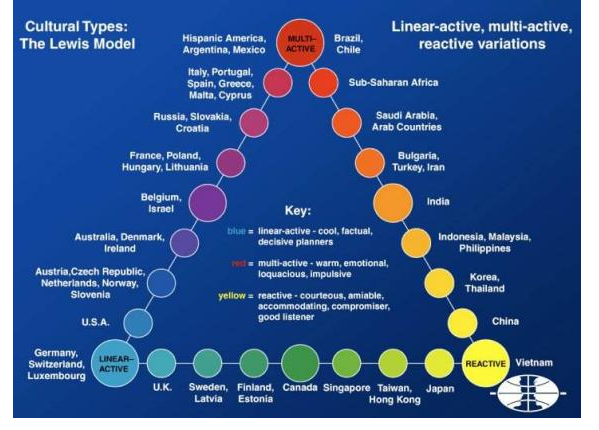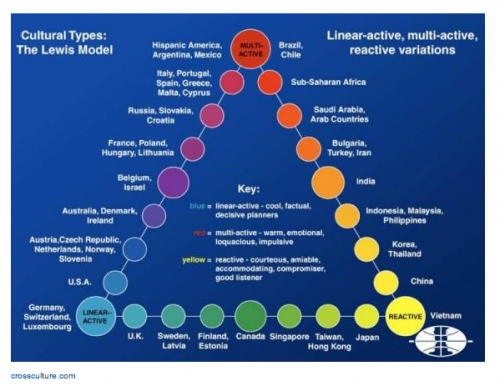Every culture in the world explained in one chart
Posted by staff / September 9, 2013 Richard LewisWall Street Journal

Have you ever been confounded by another country’s culture? Now that travel is dare I say, ubiquitous, knowing about other cultures and reactions matters. And so a Brit, Richard Lewis, decided to map out the world by its culutres. He is author of a book “When Cultures Collide”, which is considered “‘an authoritative roadmap to navigating the world’s economy,’ by the Wall Street Journal”.
Lewis figures that there are 3 main groups:
- Linear-actives—those who plan, schedule, organize, pursue action chains, do one thing at a time. Germans and Swiss are in this group.
- Multi-actives—those lively, loquacious peoples who do many things at once, planning their priorities not according to a time schedule, but according to the relative thrill or importance that each appointment brings with it. Italians, Latin Americans and Arabs are members of this group.
- Reactives—those cultures that prioritize courtesy and respect, listening quietly and calmly to their interlocutors and reacting carefully to the other side’s proposals. Chinese, Japanese and Finns are in this group.
There is more to his idea than just travel and understanding of another culture. He believes that the way countries are categorized and where they fit in to the spectrum, can actually help to forecast their response to world events. And this is useful information for everybody.
To see his “map” – a clearly-plotted triangle – and for much more on his theories, see here: Slate.
Photo credit: Screen grab from crossculture.com, Richard Lewis’s website
yo dats racist
Oy gevalt! This is so such stereotypical thinking, I’ve got the schpilkes!
[…] Every culture in the world explained in one chart […]
Dear friends, this may be a stereotypical thinking, but it is a study of societies over the world and that’s used to understand people and their culture. our concept of people behavior is based on a person-to-person concept, this concept growing with us since we are born.
Charts, such as these, are based on a culture-to-culture concept, an academic concept. that is based on others studies.